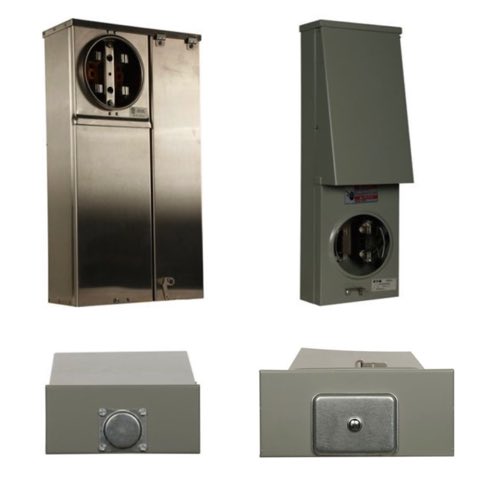Temporary Power Panels

Temporary power panels are critical devices used to provide reliable, temporary power on construction sites and other short-term applications where permanent electrical infrastructure is not yet in place. These panels are designed to deliver power safely and effectively, distributing it among the tools, lighting, and equipment that need it, by means of a circuits-and-breakers setup in a single, compact enclosure. Temporary power panels are designed to meet stringent UL standards and are housed in sturdy enclosures built to take punishment.
Temporary power setups frequently use panels that house multiple circuit breakers. The site power demands may vary, and the circuits need to be isolated for additional safety. Construction sites rely on these systems to provide consistent, isolated, and safe electrical power in areas where grid connections are not yet available or where power needs to be mobile. Proper installation of these temporary power panels ensures smooth progress toward completing the construction project by making available, at the push of a button, the same kind of power that you would use if you had immediate access to the electrical grid.
FAQs
Do temporary power panels provide efficiency and security where power distribution is needed to products in industrial settings?
Yes, temporary power panels provide efficiency and security in industrial settings by delivering safe and organized power distribution to products and equipment where temporary power is needed.
Differences Between Power Supplies, Inverters and Transformers
Power supplies
A power supply converts one type of power to another. The most common example is a power supply that takes AC voltage and converts it to DC voltage. While it is very common to use power supplies in industrial applications, one very common place to see a power supply used is for the devices such as: smartphones, laptops or tablets. Most devices come with a power cord that has a bulky block on the end of it. This block is where the power supply is located. Most devices do not use AC power, which is the type of power being supplied to homes. They use some form or DC power. The power supply changes the AC voltage to the correct DC voltage for the device.
Inverters
Inverters work in a similar way to power supplies, with one major difference, instead of converting AC power to DC power, the inverter does the opposite. It converts DC power to AC power. DC power is created by devices such as solar panels or batteries, but most homes require AC power. To convert the DC power that is generated by the solar panels, an inverter is used.
Transformers
Transformers convert one type of AC power to a different type of AC power. For example, homes commonly use 120 VAC and automatic sprinkling systems have valves that require 24 VAC. A transformer converts 120 VAC to 24 VAC so the sprinkler valves can operate properly. Transformers come in many different shapes and sizes. and can convert AC power up or down.

